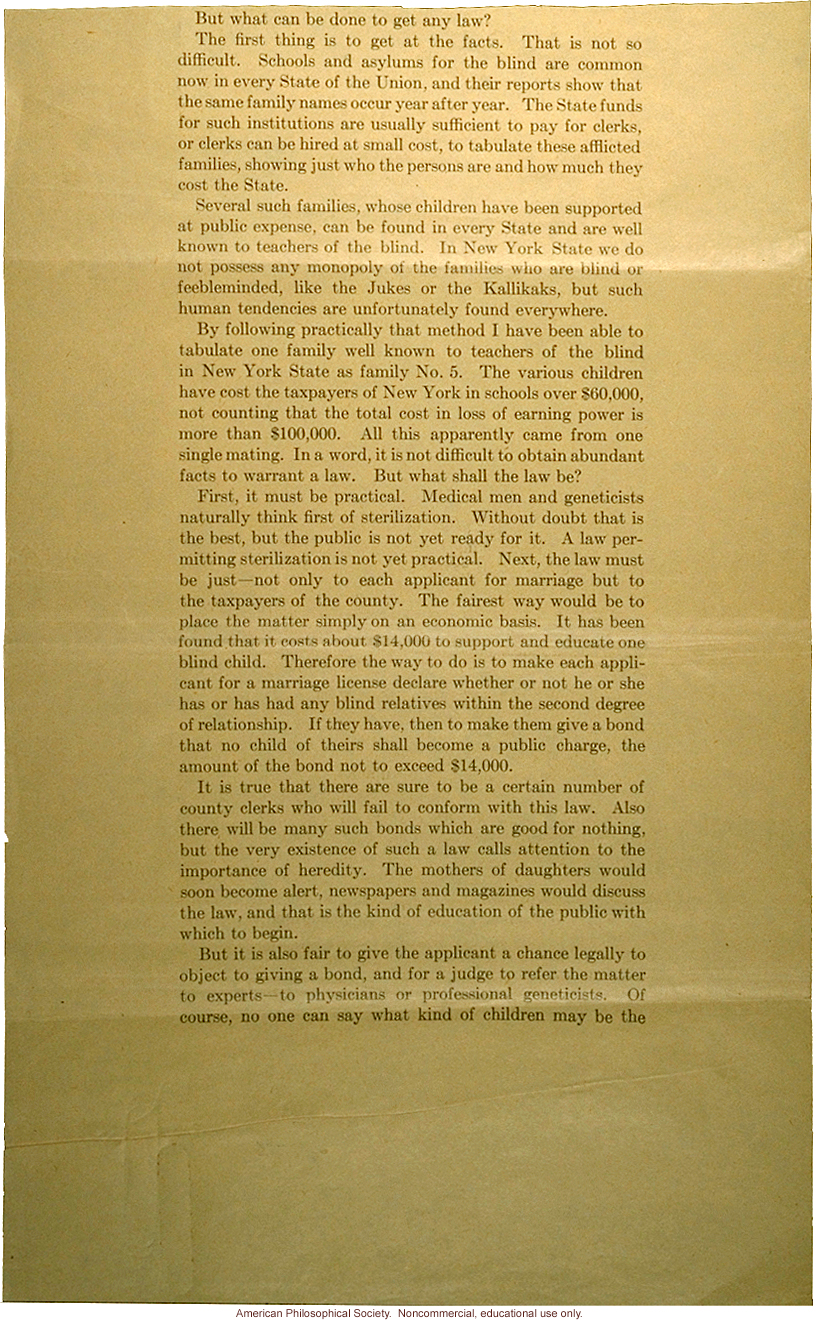ID# 309: |
"Concerning a law to lessen hereditary blindness," by Lucien Howe, American Opthalmological Society Journal | |||
Date: |
1926 |
|||
Source: |
American Philosophical Society, ERO, MSC77,SerX,Box3: Harry H. Laughlin | |||

 |

But what can be done to get any law? The first thing is to get at the facts. That is not so difficult. Schools and asylums for the blind are common now in every State of the Union, and their reports show that the same family names occur year after year. The State funds for such institutions are usually sufficient to pay for clerks, or clerks can be hired at small cost, to tabulate those afflicted families, showing just who the persons are and how much they cost the State. Several such families, whose children have been supported at public expense, can be found in every State and are well known to teachers of the blind. In New York State we do not possess any monopoly of the families who are blind or feebleminded, like the Jukes or the Kallikaks, but such human tendencies are unfortunately found everywhere. But following practically that method I have been able to tabulate one family well known to teachers of the blind in New York State as family No. 5. The various children have cost the taxpayers of New York in schools over $60,000, not counting that the total cost in loss of earning power is more than $100,000. All this apparently came from one single mating. In a word, it is not difficult to obtain abundant facts to warrant a law. But what shall the law be? First, it must be practical. Medical men and geneticists naturally think first of sterilization. Without doubt that is the best, but the public is not yet ready for it. A law permitting sterilization is not yet practical. Next the law must be just - not only to each applicant for marriage but to the taxpayers of the county. The fairest way would be to place the matter simply on an economic basis. It has been found that it costs about $14,000 to support and educate one blind child. Therefore the way to do is to make each applicant for a marriage license declare whether or not he or she has or has had any blind relatives within the second degree of relationship. If they have, then to make them give a bond that no child of theirs shall become a public charge, the amount of the bond not to exceed $14,000. It is true that there will a number of county clerks who fail to conform with this law. Als there will be many such bonds which are good for nothing, but the very existence of such a law calls attention to the importance of heredity. The mothers of daughters would soon become alert, newspapers and magazines would discuss the law, and that is the kind of education of the public with which to begin. But it is also fair to give the applicant a chance legally to object to giving a bond, and for a judge to refer the matter to experts - to physicians or professional geneticists. Of course, no one can say what kind of children may be the